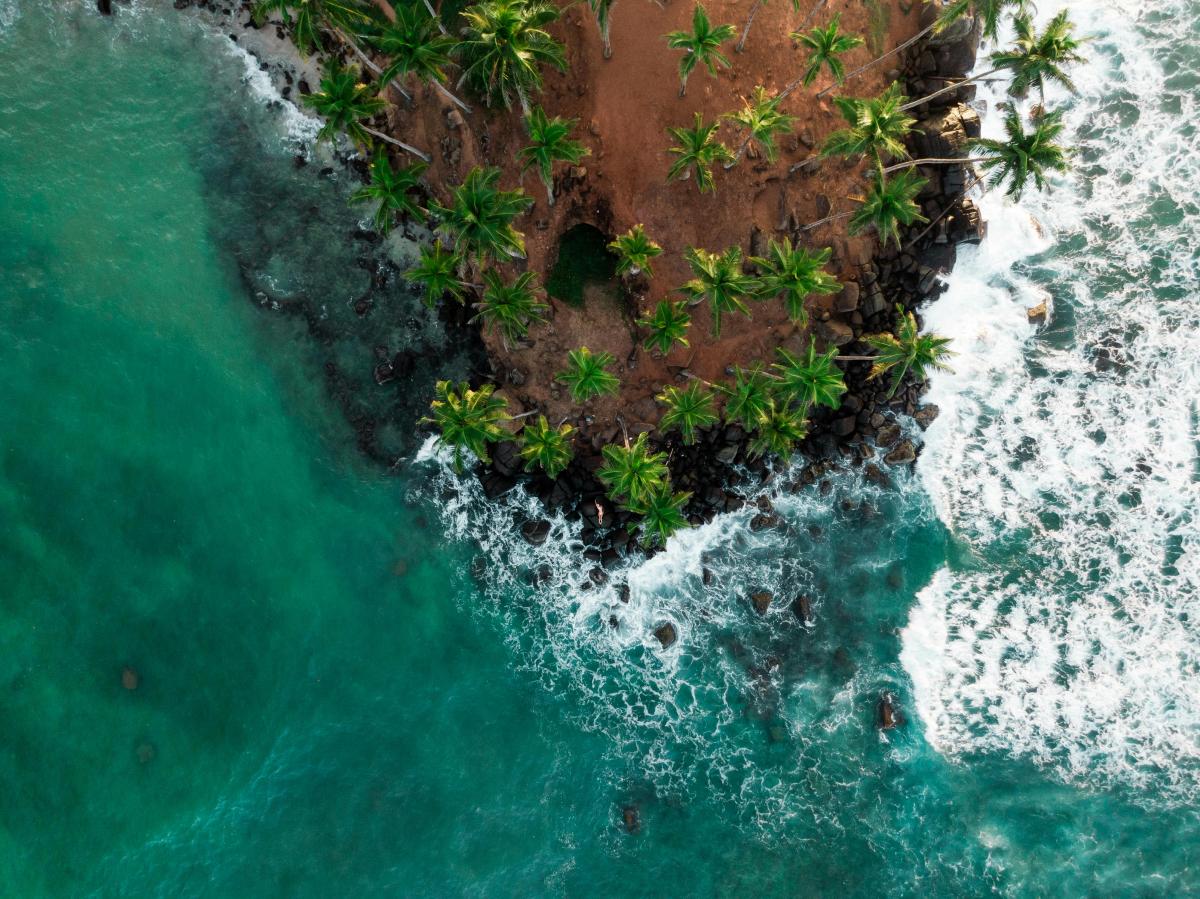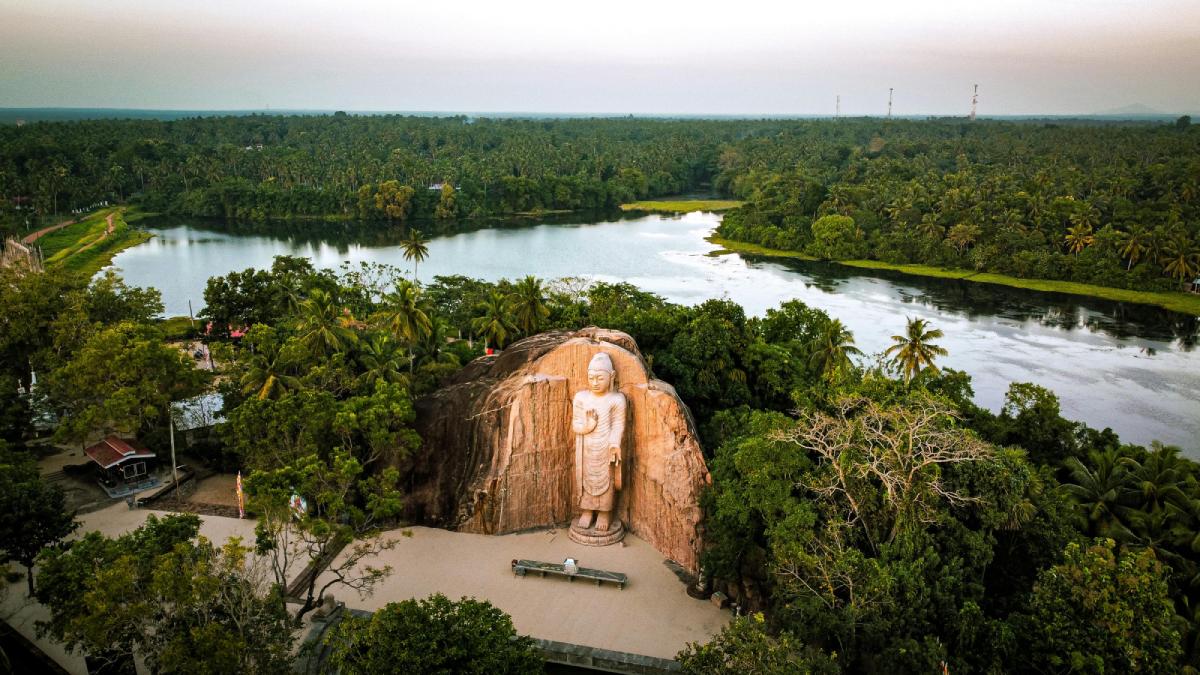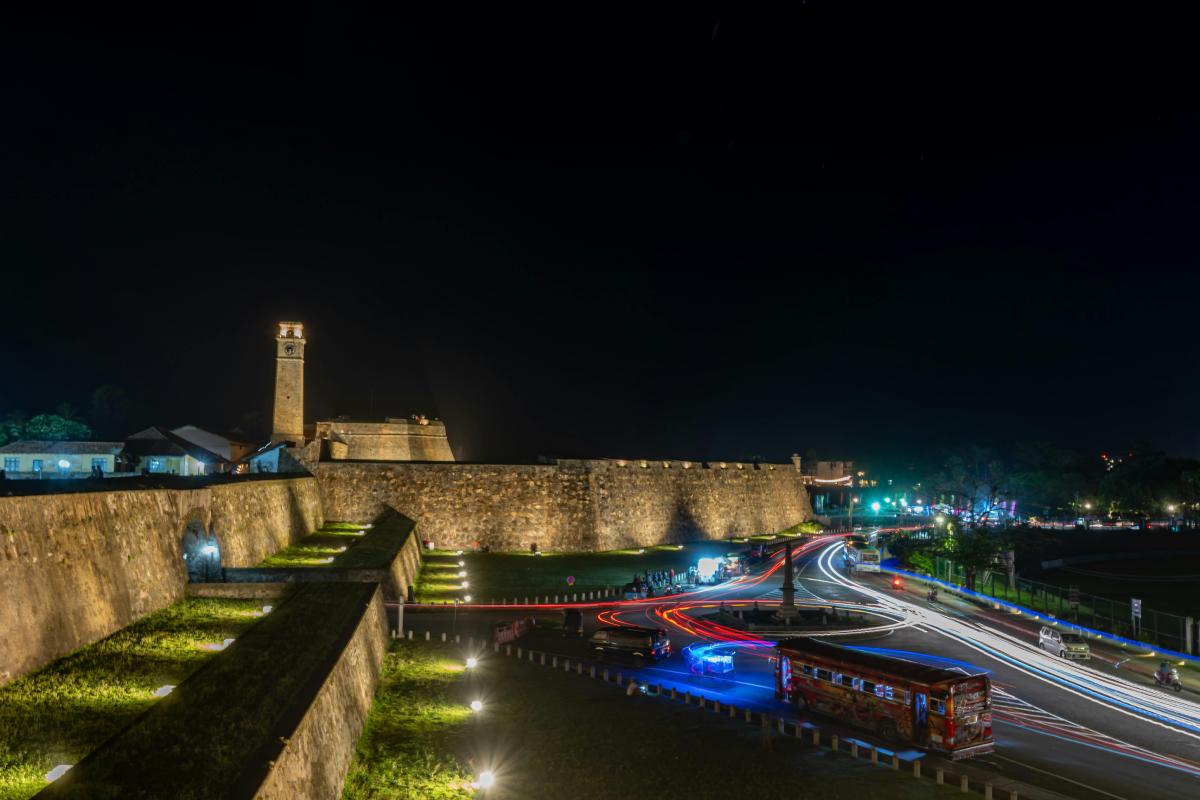Nestled along the southern coast of Sri Lanka, Mirissa stands as a testament to the natural beauty and cultural richness that this island nation has to offer. Once a quiet fishing village, it has transformed into a sought-after destination that manages to maintain its laid-back charm while catering to travelers seeking both adventure and relaxation. This coastal gem combines pristine beaches, diverse marine life, authentic cuisine, and warm hospitality, creating an experience that captivates visitors from around the world.
Introduction Mirissa Sri Lanka’s Coastal Paradise
Mirissa is situated approximately 150 kilometers south of Colombo, Sri Lanka‘s commercial capital, in the Matara District of the Southern Province. The town stretches along a curved bay, with the Indian Ocean’s turquoise waters meeting golden sand beaches that are sheltered by coconut palms. The landscape gradually rises into lush hills behind the coastline, creating a picturesque setting that feels both intimate and expansive.
The region experiences a tropical climate with two distinct monsoon seasons. The southwest monsoon (May to September) brings heavy rainfall, while the northeast monsoon (December to March) creates drier conditions. For travelers, the ideal time to visit falls between December and April when the weather is consistently sunny with temperatures hovering around 26-30°C (79-86°F), the sea is calm, and visibility for water activities is at its peak.
Historical Context
Mirissa’s history is intertwined with Sri Lanka’s maritime heritage. For centuries, the natural harbor provided shelter for fishing vessels and trading ships navigating the Indian Ocean trade routes. The area’s strategic importance was recognized during colonial periods, with Portuguese, Dutch, and British influences leaving subtle marks on local architecture and culture.
The name “Mirissa” itself has historical significance, believed to derive from “mee” (a type of tree found in the area) and “rissa” (rock), referring to the distinctive rock formations along its coastline. These rocks, which separate the main beach from smaller coves, have become iconic landmarks and contribute to the area’s unique character.
In recent decades, Mirissa has experienced significant transformation. Following the devastating 2004 Indian Ocean tsunami, which severely impacted the region, the community rebuilt with remarkable resilience. The subsequent growth of tourism has brought both economic opportunities and challenges related to sustainable development.
Marine Life and Whale Watching
Perhaps Mirissa’s most famous attraction is the exceptional opportunity for whale watching. The deep waters off the coast lie along the migratory routes of several cetacean species, making it one of the best places in the world to observe these magnificent marine mammals in their natural habitat.
Blue whales, the largest animals ever to have existed on Earth, frequent these waters, particularly between December and April. Sperm whales, fin whales, Bryde’s whales, and several dolphin species, including spinner dolphins and bottlenose dolphins, are also commonly sighted. The relative proximity of the continental shelf to the shoreline means that these encounters can occur within a few hours’ journey from the harbor.
Numerous operators offer whale-watching excursions, typically departing early in the morning to maximize chances of successful sightings and avoid rough afternoon seas. While competition has led to concerns about vessel crowding and wildlife disturbance, efforts are underway to establish and enforce responsible wildlife viewing practices.
Beaches and Coastal Features
Mirissa Beach, the main stretch of shoreline, extends for about a kilometer, framed by rocky outcrops at either end. The beach has gained a reputation for its perfect balance between development and natural beauty. The western end tends to be quieter, while the central and eastern portions host beachfront restaurants and accommodation options.
Parrot Rock, a small islet accessible at low tide, has become an Instagram favorite, offering panoramic views of the coastline. Secret Beach, a secluded cove reached via a winding path through coconut groves, provides a more intimate setting for those seeking to escape the relative bustle of the main beach.
Coconut Tree Hill, located on the eastern headland, has gained fame for its dramatic landscape of palm trees perched on a cliff overlooking the ocean. This spot is particularly magical at sunset when the silhouettes of the trees are cast against the orange sky.
Further along the coast, Weligama Bay offers excellent conditions for beginner surfers, while Polhena Beach features natural rock pools perfect for safe swimming.
Water Activities and Adventure
Beyond whale watching, Mirissa offers a wealth of water-based activities. Snorkeling around the rocky areas reveals colorful coral formations and a diversity of tropical fish. More experienced swimmers can venture to Turtle Bay, where sea turtles are often spotted feeding on seagrass.
Surfing has gained significant popularity, with several breaks catering to different skill levels. The main beach offers moderate waves suitable for intermediate surfers, while nearby Weligama provides gentler conditions ideal for beginners, with numerous surf schools offering lessons and equipment rental.
Fishing remains an important part of local life, and visitors can join traditional fishing expeditions on outrigger canoes known as “oruwa.” Deep-sea fishing charters are also available, targeting tuna, mahi-mahi, and marlin among other species.
For those seeking a different perspective, stand-up paddleboarding and kayaking provide opportunities to explore the coastline at a leisurely pace, particularly in the calm waters of early morning.
Local Cuisine and Dining Experiences
Mirissa’s culinary scene reflects its coastal location with a strong emphasis on seafood. Fresh catch arrives daily at the harbor, making its way to the many restaurants lining the beach and main road. Traditional Sri Lankan cooking methods are applied to an array of marine bounty, including tuna, seer fish, prawns, crabs, and lobsters.
Rice and curry, the national dish, showcases the complex and vibrant flavors of Sri Lankan cuisine. A typical meal includes rice accompanied by multiple curries, sambols (spicy condiments), and pickles. The coconut, which grows abundantly in the region, features prominently in many dishes, used in forms ranging from milk and cream to grated flesh and oil.
Beachfront dining has become a signature experience in Mirissa, with restaurants setting up tables directly on the sand each evening. Fresh seafood is displayed on ice, allowing diners to select their meal before it’s prepared. The fusion of local flavors with international influences has created a diverse dining scene that caters to various palates.
Don’t miss the opportunity to sample “short eats” from local bakeries, including egg rolls, fish buns, and vegetable patties, which make for perfect snacks between meals. Fresh tropical fruits, especially pineapple, mango, and papaya, are sold by vendors along the roadside and offer refreshing relief from the tropical heat.
Culture and Community
Despite its popularity with tourists, Mirissa maintains a strong sense of local identity and traditional way of life. Fishing remains a primary occupation for many residents, with the rhythms of their daily routines visible in the early morning activity at the harbor.
Buddhism is the predominant religion in the area, reflected in the presence of several temples. The Wewurukannala Vihara in nearby Dickwella houses one of the largest Buddha statues in Sri Lanka and offers insight into local religious practices and artistry.
Traditional crafts including lace-making, wood carving, and batik fabric design are practiced in surrounding villages, with products available at local markets. The ancient art of stilt fishing, though less common than in decades past, can still be observed in neighboring coastal areas, particularly at sunset when the visual impact is most dramatic.
Accommodation and Practical Information
Mirissa offers a wide range of accommodation options to suit various budgets and preferences. Luxury boutique hotels provide upscale amenities with stunning ocean views, while numerous guesthouses and homestays offer a more authentic and economical alternative. Beachfront cabanas combine convenience with the quintessential tropical experience of falling asleep to the sound of waves.
The town is easily accessible by train or bus from Colombo, with the journey taking approximately 3-4 hours. The nearest railway station is in Weligama, a short tuk-tuk ride away. For more direct access, the Southern Expressway has reduced driving time from Colombo to about 2.5 hours.
Local transportation options include tuk-tuks for short distances and rental scooters for those comfortable navigating Sri Lankan roads. Walking remains one of the best ways to explore the immediate area, with most attractions in the town center accessible on foot.
Environmental Considerations and Sustainable Tourism
As Mirissa’s popularity has grown, so too have concerns about environmental impact. Increased development has put pressure on natural resources and waste management systems. Plastic pollution, in particular, poses a threat to marine ecosystems, with debris often washing up on otherwise pristine beaches.
Several local initiatives have emerged to address these challenges. Beach clean-ups are regularly organized by community groups and environmentally conscious businesses. Some establishments have adopted eco-friendly practices, including banning plastic straws, implementing water conservation measures, and sourcing local and organic ingredients.
Responsible tourism operators emphasize education about marine conservation and maintain respectful distances from whales and dolphins during excursions. Supporting these businesses can help ensure that Mirissa’s natural attractions remain viable for future generations.
Exploring Beyond Mirissa
Mirissa serves as an excellent base for exploring Sri Lanka’s southern coast. Galle Fort, a UNESCO World Heritage site that showcases colonial architecture within impressive ramparts, is just an hour away. The historic city offers narrow streets lined with boutiques, cafes, and cultural attractions.
Nature enthusiasts will appreciate the proximity to Yala and Udawalawe National Parks, both renowned for wildlife viewing including elephants and the elusive Sri Lankan leopard. Day trips can be arranged through local operators.
For those seeking additional beach experiences, Unawatuna offers protected swimming conditions, while Hiriketiya provides a more bohemian atmosphere with excellent surfing opportunities. Inland, the Sinharaja Forest Reserve presents a chance to experience pristine rainforest biodiversity.
Conclusion
Mirissa encapsulates the essence of Sri Lanka’s southern coastal allure—a harmonious blend of natural beauty, cultural authenticity, and warm hospitality. Whether you’re watching the sunrise over the Indian Ocean, spotting a blue whale’s majestic fluke disappearing beneath the waves, or savoring the complex flavors of fresh seafood curry with your feet in the sand, the experiences here create lasting memories.
As development continues to shape this once-sleepy fishing village, the challenge remains to preserve the very qualities that make it special. With mindful tourism practices and community engagement, Mirissa can continue to thrive as a destination that benefits both visitors and residents while safeguarding its environmental treasures.
For travelers seeking to experience the quintessential Sri Lankan coastal lifestyle with access to world-class natural phenomena, Mirissa offers a perfect blend of accessibility and escape, adventure and tranquility, tradition and modernity.


